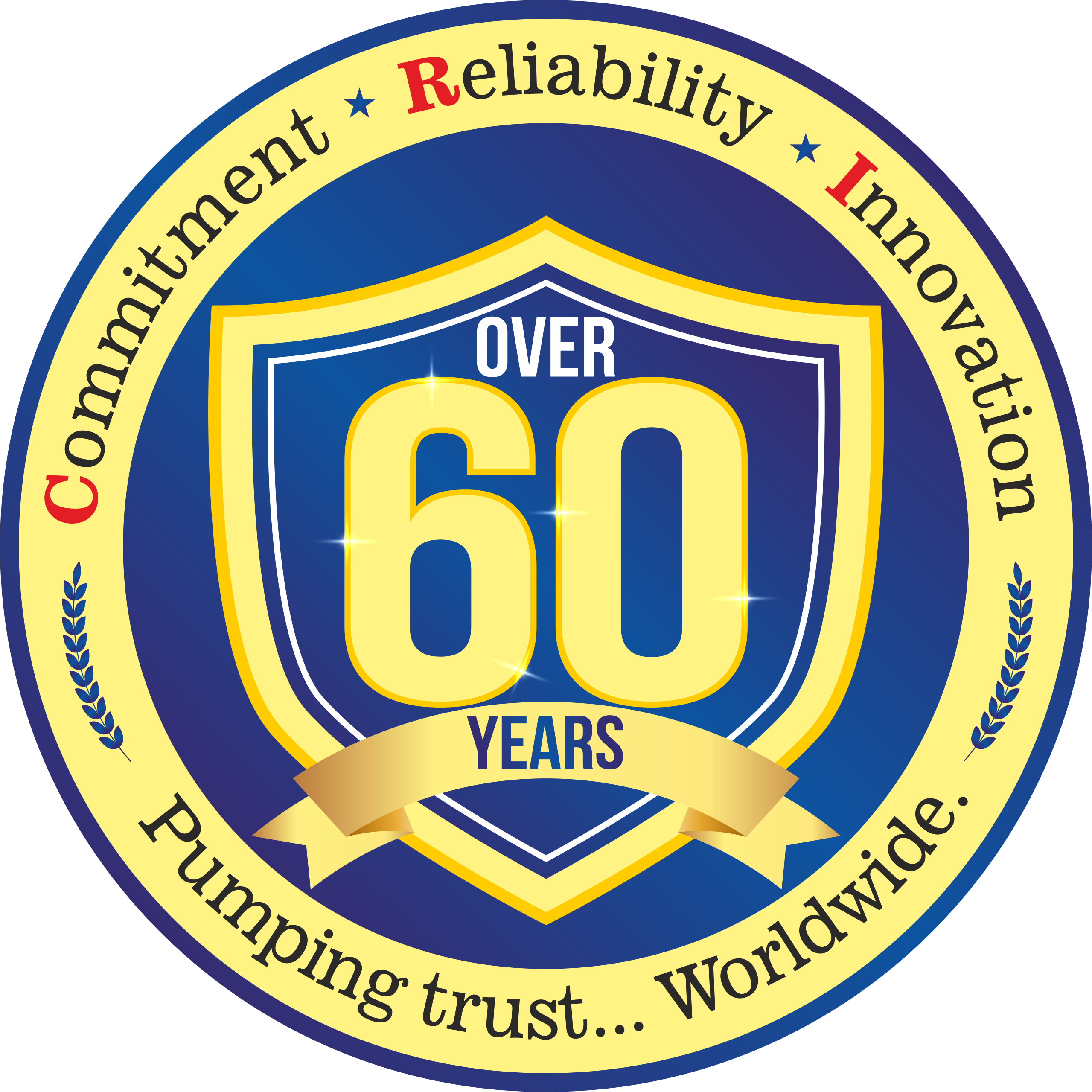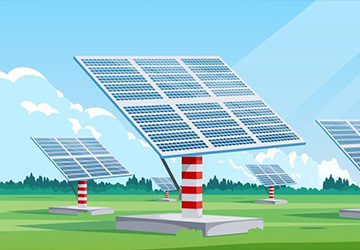Solar Water Pumps For Agriculture
India is endowed with vast solar energy potential. The National Institute of Solar Energy has assessed the Country’s solar potential of about 748 GW assuming 3% of the wasteland area to be covered by Solar PV modules. Solar power installed capacity reached around 72.02 GW on 30th October 2023. Solar water pumps are becoming an increasingly popular option in the agricultural industry and for a good reason. This article will discuss the advantages of using solar water pumps for irrigation, the types of solar water pumps, the PM-KUSUM Scheme, and the salient features of C.R.I. solar pumping solutions. What is a Solar Water Pump? A solar water pump is a type of pump that runs on solar energy. It consists of solar panels that convert sunlight into electricity, which is then used to power the pump. Solar water pumps are an eco-friendly and cost-effective alternative to traditional diesel or electric pumps which are contributing to the rise of CO2. They are easy to set up, require minimal maintenance, and have a long lifespan. Solar water pumps can be used for various applications, including irrigation, livestock watering, and drinking water supply. Advantages of Using Solar Water Pumps for Irrigation One of the main advantages of using solar water pumps for irrigation is that they are cost-effective. Traditional diesel or electric pumps require fuel or electricity, which can be expensive, especially for small-scale farmers. Solar water pumps, on the other hand, use solar energy, which is free and abundant. Solar water pumps also have a long lifespan and require minimal maintenance, which further reduces their long-term operational and maintenance costs. Another advantage of using solar water pumps is that they are eco-friendly. They do not emit harmful pollutants, making them an ideal option for environmentally conscious farmers. Types of Solar Water Pumps and Their Applications There are two main types of solar water pumps: submersible pumps and surface pumps and are available in both AC / DC models. Submersible pumps are used to pump water from wells or boreholes, while surface pumps are used to pump water from lakes, rivers, or other surface water sources. Submersible pumps are more efficient and can operate at higher heads and lower discharge of water compared to Surface Pumps. However, they are also more expensive and require a well or borehole to be installed. Surface pumps, on the other hand, are cheaper and easier to install but have a lower operating head with a higher discharge of water. PM-KUSUM Scheme (Pradhan Mantri Kisan Urja Suraksha evam Utthaan Mahabhiyan) This scheme is aimed at ensuring energy security for farmers in India, along with honoring India’s commitment to increase the share of installed capacity of electric power from non-fossil-fuel sources to 40% by 2030 as part of Intended Nationally Determined Contributions (INDCs). The Scheme consists of three components: Component A:Under this component, solar or other renewable energy-based power plants of capacity 500 kW to 2 MW can be installed on barren or uncultivable agricultural land. Agriculture land is also permitted under this scheme provided that solar plants are installed in slit fashion (i.e. raised structure for installation of solar panels) and with adequate spacing between panel rows for ensuring that farming activity is not affected. Component B: Under this Component, farmers can replace their existing diesel-powered agriculture pumps with standalone solar pumps of capacity up to 7.5 HP in off-grid areas. Pumps of capacity higher than 7.5 HP may be allowed, however, the central subsidy will be limited to the subsidy applicable for the pump of 7.5 HP Component C:Under this Component, farmers can solarize their existing grid-connected agriculture pumps of capacity up to 7.5 HP. Solar PV capacity up to two times of pump capacity in kW is allowed under the scheme. However, States may choose to allow lower solar PV capacity, which in no case will be less than the pump capacity in HP. The farmer will be able to use the generated solar power to meet the irrigation needs and the excess solar power will be sold to DISCOMs. Who is eligible for the PM-KUSUM Scheme? Component A: Individual farmers/ group of farmers/ cooperatives/panchayat/ Farmer Producer Organization (FPO)/Water User associations (WUA). The land on which the project is proposed to be installed should be within 5 km of the nearest electricity substation. Component B: Individual farmers, Water User Associations, and community/cluster-based irrigation systems will be covered under this component. Component C: Individual farmers, water user associations, and community/cluster-based irrigation systems will also be covered under this component. Benefits of Solar Water Pumps in Agriculture The benefits of using solar water pumps in agriculture are numerous. Reduce the cost of irrigation, which can be a significant expense for farmers. Provide a reliable source of water, which is essential for crop growth. Eco-friendly and does not contribute to global warming. Easy to set up and require minimal maintenance, making them a hassle-free option for farmers. C.R.I. Solar Water Pumping Systems C.R.I. Pumps, a renowned leader in solar pumping solutions, has successfully obtained empanelment in the Ministry of New & Renewable Energy (MNRE)’s prestigious PM KUSUM – 3 program on a nationwide scale for solar pumping systems under component B. This accomplishment solidifies C.R.I. Pumps’ position as a key player in the renewable energy sector highlights their expertise in providing efficient and sustainable solutions for water pumping needs. With the inclusion in the PM-KUSUM – 3 program on a nationwide basis, C.R.I. Pumps are poised to contribute significantly towards the nation’s renewable energy goals and further strengthen its reputation as a reliable and innovative provider of solar pumping solutions. In addition to this remarkable achievement, C.R.I. Pumps has successfully installed over 14,500 solar pumping systems,52,000 solar pumps, and 20,000 solar pump controllers across the globe through various government schemes such as NABARD, State Nodal Agencies (SNA), PM-KUSUM 1 and 2, as well as private installations. The exceptional technical and financial capabilities of C.R.I. Pumps have been duly recognized by Credit Analysis and Research Ltd. (CARE), who have awarded them the highest













